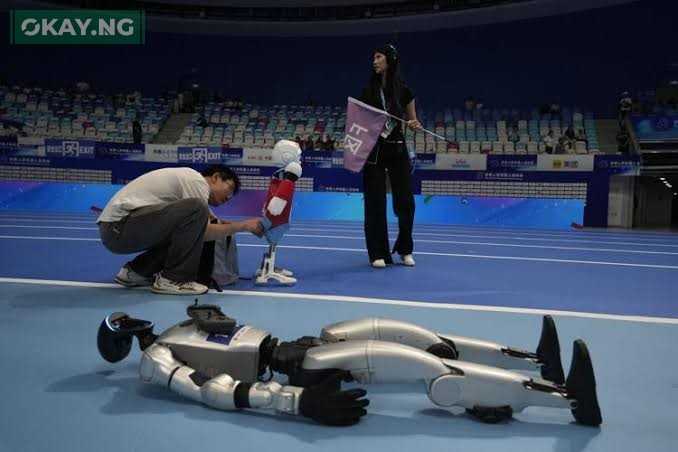The city of Beijing became the stage for a groundbreaking global event on Friday as the inaugural Humanoid Robot Games kicked off, drawing together over 500 android competitors from across the globe. The occasion marked the first sports competition of its kind dedicated solely to robots designed in the likeness of humans, blending technological innovation with the thrill of athletic rivalry.
The venue, the National Speed Skating Oval—originally built for the 2022 Winter Olympics—was transformed into an arena where mechanical athletes tested their capabilities in both traditional sports and real-world tasks. Teams from 16 different countries participated, pushing the limits of robotics engineering.
Events ranged from 100-metre hurdles and basketball to practical challenges such as sorting medical supplies and cleaning tasks. Some robots displayed remarkable precision, while others entertained the crowd with clumsy tumbles and amusing missteps.
“I believe in the next 10 years or so, robots will be basically at the same level as humans,” said 18-year-old Chen Ruiyuan, a spectator who travelled to the games to witness the spectacle.
Friday’s five-a-side football match drew laughter as robots, each the size of a seven-year-old child, often found themselves stuck in scrums or collapsing in heaps. However, other contests showcased serious advancements—particularly in the 1500-metre race, where domestic robotics leader Unitree’s machines outpaced the competition with notable speed. The fastest robot completed the distance in 6:29:37—still far from the human men’s world record of 3:26:00.
A humorous moment unfolded when one racing robot collided with a human operator. The machine remained upright, but the human fell to the ground, fortunately without injury.
According to organisers, this championship represents a shift from decades of general robotics contests toward specialised events spotlighting humanoid technology. The Chinese government’s strong backing for the sector—placing humanoids at the “centre of their national strategy,” according to the International Federation of Robotics—is a key driver of such developments.
Authorities hope the games will inspire public interest. Cui Han, who attended with her 10-year-old son, explained, “I hope it will encourage him to learn more about these new technologies.” Schools in Beijing reportedly arranged and funded student visits to the event.
China recently announced a one-trillion-yuan fund to support tech startups, including those focused on robotics and artificial intelligence. The nation already leads the world in industrial robot use, and earlier this year hosted what was billed as the first humanoid robot half-marathon.
Spectator Chen, who plans to study automation at university, found the games inspiring. “My favourite is the boxing, because… it requires a lot of agility, and I can really see how the robots have improved from before.”
The kung fu area offered a memorable performance when a Transformer-like robot attempted an acrobatic move, only to topple forward. The crowd cheered as it spun helplessly on the floor before regaining balance.
The Humanoid Robot Games, in its debut edition, signals a bold step forward for technology-driven competition and hints at a future where mechanical and human athleticism may one day share the same stage, okay.ng reports.













